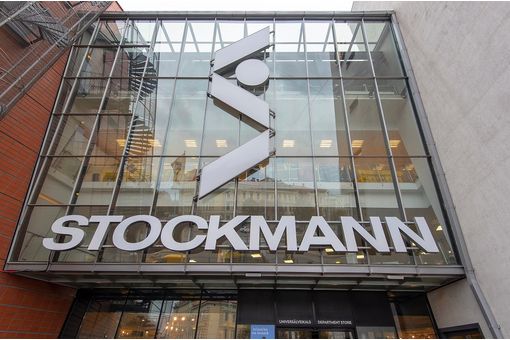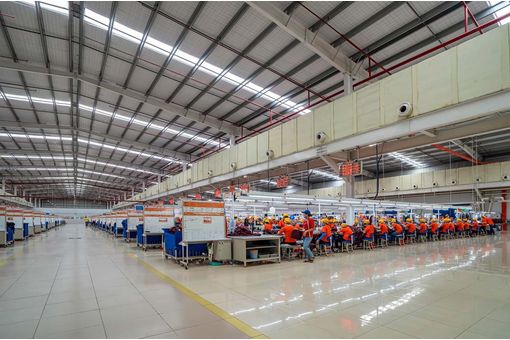Interviews
Revenue of cassava starch industry drops in Brazil
01 Jun '12
4 min read
The increase in the Brazilian economy favors the demand for starch as an industrial raw material. In spite of that, cassava starch, which is a competitor of corn starch, mainly, is losing space, according to data from Cepea (Center for Advanced Studies on Applied Economics), of Esalq/USP. The revenue of the industry, in real terms (considering the inflation), moved down 20.4% between 2010 and 2011, to 658.26 million reais; however, it is still the second highest since 2004. The revenue drop in 2011 is a result of a decrease of 4.2% in the cassava starch production and of 16.8% in prices.
The eighth annual report on the starch sector, elaborated by Cepea in a partnership with Abam (Brazilian Association of Starch Producers), indicates that, besides the second consecutive decrease of the processed volume of cassava in 2011, the yield of the raw material has also dropped. Therefore, the starch volume produced in 2011 limited to 519.1 thousand tons, 4.2% lower compared to 2010, and the lowest volume since 2004.
Despite the lower production, cassava starch prices moved down. In 2011, the price average (with term payment) was 1,300.13 reais per ton, against 1,563.93 reais per ton in 2010 (deflated by IGP-DI March 2012). According to researchers from Cepea, the price decrease is related to the fact that many starch consumers have replaced the product by corn starch. Moreover, some consumers had also registered a lower performance compared to the GDP average, reducing purchases of cassava starch. The main reason for the loss of competition of the cassava starch compared to other types of starch, mainly of corn, is the price oscillation of cassava starch, a result of ups and downs in the cassava supply during the year. Uncertainties regarding cassava starch prices end up reducing the demand from some consumers.
Paraná continued as the major Brazilian cassava starch producer in 2011, accounting for 70.5% of the total, which is similar to that observed in 2010. Mato Grosso do Sul state increased its share to 17.1%, while São Paulo's share dropped to 10.7%. The share of Santa Catarina state remained stable, at 1.3% of the Brazilian production.
As for cassava starch consumers in Brazil, wholesalers remained as the most important in 2011 (27.7% of total sales of starch sellers, followed by the paper and paperboard sector (18.2%), bakery (14.8%), slaughterhouses (13.1%), retailers (11.2%), other starch factories (5.1%), chemical industry (2.3%) and textile industry (1.1%). Other sectors accounted for 5.1% of sales from starch sellers.
The cultivated area with cassava moved up in the 2011/12 season, which tends to increase the supply in 2012. However, in some areas, the cassava production is already indicating a decrease because of unfavorable weather conditions, which have affected the development of crops.
Regarding the 2012/13 season, players surveyed by Cepea indicate that the area which will be planted may drop, due to the sharp increase in cost production in some regions because of the lower land supply and the increase of labor force costs. The profitability of grains sector, particularly, may also influence in the cassava planting.
The eighth annual report on the starch sector, elaborated by Cepea in a partnership with Abam (Brazilian Association of Starch Producers), indicates that, besides the second consecutive decrease of the processed volume of cassava in 2011, the yield of the raw material has also dropped. Therefore, the starch volume produced in 2011 limited to 519.1 thousand tons, 4.2% lower compared to 2010, and the lowest volume since 2004.
Despite the lower production, cassava starch prices moved down. In 2011, the price average (with term payment) was 1,300.13 reais per ton, against 1,563.93 reais per ton in 2010 (deflated by IGP-DI March 2012). According to researchers from Cepea, the price decrease is related to the fact that many starch consumers have replaced the product by corn starch. Moreover, some consumers had also registered a lower performance compared to the GDP average, reducing purchases of cassava starch. The main reason for the loss of competition of the cassava starch compared to other types of starch, mainly of corn, is the price oscillation of cassava starch, a result of ups and downs in the cassava supply during the year. Uncertainties regarding cassava starch prices end up reducing the demand from some consumers.
Paraná continued as the major Brazilian cassava starch producer in 2011, accounting for 70.5% of the total, which is similar to that observed in 2010. Mato Grosso do Sul state increased its share to 17.1%, while São Paulo's share dropped to 10.7%. The share of Santa Catarina state remained stable, at 1.3% of the Brazilian production.
As for cassava starch consumers in Brazil, wholesalers remained as the most important in 2011 (27.7% of total sales of starch sellers, followed by the paper and paperboard sector (18.2%), bakery (14.8%), slaughterhouses (13.1%), retailers (11.2%), other starch factories (5.1%), chemical industry (2.3%) and textile industry (1.1%). Other sectors accounted for 5.1% of sales from starch sellers.
The cultivated area with cassava moved up in the 2011/12 season, which tends to increase the supply in 2012. However, in some areas, the cassava production is already indicating a decrease because of unfavorable weather conditions, which have affected the development of crops.
Regarding the 2012/13 season, players surveyed by Cepea indicate that the area which will be planted may drop, due to the sharp increase in cost production in some regions because of the lower land supply and the increase of labor force costs. The profitability of grains sector, particularly, may also influence in the cassava planting.
Popular News
Leave your Comments
Dr. Michael Duetsch & Man Woo Lee
UPM Biochemicals and Dongsung Chemical
Alex and Zofia Torun-Shaw
Brand - Laird Utility
































-Ltd..jpg?tr=w-120,h-60,c-at_max,cm-pad_resize,bg-ffffff)





.jpg?tr=w-120,h-60,c-at_max,cm-pad_resize,bg-ffffff)
.jpg?tr=w-120,h-60,c-at_max,cm-pad_resize,bg-ffffff)






